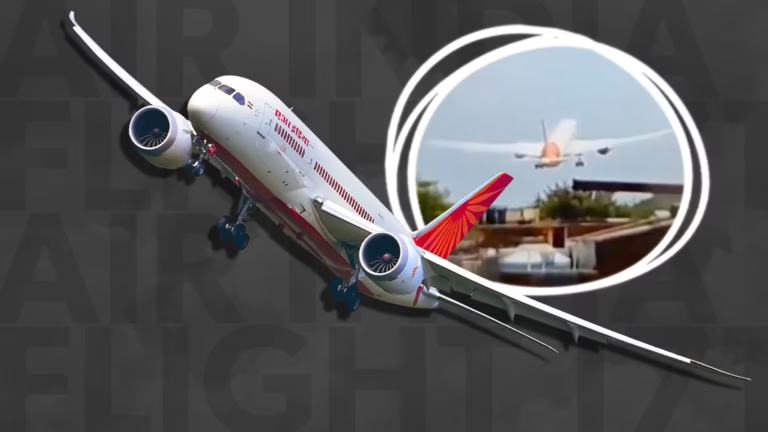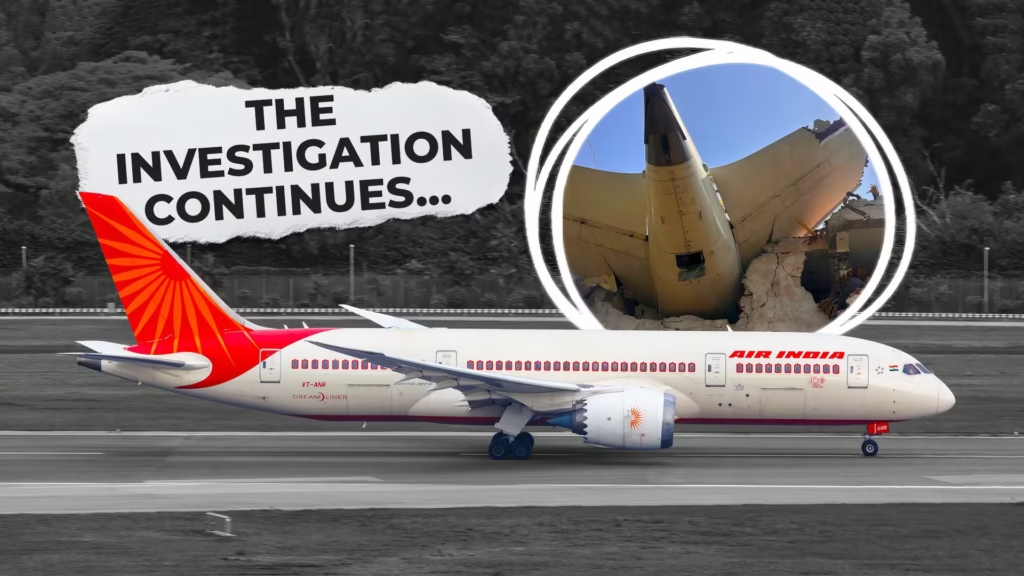


July 15, 2025 | New Delhi/Mumbai
Recently discovered cockpit audio from Air India Flight 171 has revealed disturbing details about the last moments of the flight, in a tragic turn that continues to raise difficult issues about aviation safety.
before the aircraft crashed in early May. According to officials close to the investigation, the first officer can be heard panicking as the crew struggled with a critical mid-air emergency — just minutes before the flight plummeted from the sky.
The crash, which occurred en route from Mumbai to Dubai, resulted in the deaths of over 190 passengers and crew members. While the exact cause of the crash remains under investigation, the recent revelations from the Cockpit Voice Recorder (CVR) have sparked intense debate across aviation circles, with growing concerns about crew preparedness, communication lapses, and emergency protocol adherence.
What the Cockpit Audio Reveals
According to insiders familiar with the preliminary findings, the first officer (co-pilot) can be heard expressing alarm and panic as the aircraft experienced a series of technical anomalies — including a sudden drop in cabin pressure and engine irregularities. The commander (pilot) attempted to stabilize the aircraft, but communication between the two appeared strained.
“The co-pilot repeatedly says ‘What’s happening? What’s happening?’ in a distressed tone,” said an aviation official, speaking anonymously due to the ongoing probe.
“The commander tried to maintain calm, but the situation rapidly deteriorated.”
These audio details were first flagged in the internal report submitted to India’s Directorate General of Civil Aviation (DGCA) and have now become a critical part of the accident investigation.
Lack of Coordination in a Crisis
One of the major takeaways from the CVR analysis is the apparent lack of structured coordination between the cockpit crew when the emergency unfolded. Aviation experts emphasize that while panic is human, protocols exist specifically to guide pilots during unexpected failures.
“It’s not just about flying skills. It’s about how calmly and effectively a team functions under pressure,” said retired pilot Captain Rajan Mehrotra.
“That’s what simulator training is meant to drill into a pilot. If even one person panics, it throws the entire chain of command off balance.”
Families Demand Accountability, Not Just Reports
The families of victims have renewed their demand for accountability and transparency after these cockpit recordings came to light.
“We were told it was technical failure. Now we hear the crew didn’t know what to do?” said one grieving relative outside the inquiry office in Mumbai.“If they hadn’t been trained for emergencies, why were they in the cockpit?”
With over 40 families still awaiting full compensation and answers, these revelations add emotional weight to what was already one of India’s most devastating aviation disasters in recent years.
Air India & DGCA’s Response So Far
Air India has not issued a formal statement regarding the cockpit audio but confirmed that all voice and data recordings are in the hands of the investigation committee. A DGCA spokesperson said that final conclusions will only be drawn after a complete black box analysis, including flight data.
The airline industry regulator has also announced a re-evaluation of crew training protocols, especially in long-haul international sectors.
My View: A Reporter’s Perspective from the Ground
As a journalist reporting for sbkinews.in, I’ve covered many breaking stories, including air safety issues, but few have felt as personal as this one. Perhaps because it’s not just a mechanical failure—it’s a human failure wrapped in protocol, pressure, and panic.
It reminds us that behind every pilot is a person. And behind every cockpit command is a life-or-death decision. If our flight systems and training aren’t updated to reflect real-world pressures, no checklist will save lives when crisis hits.
🛡 EEAT: Why You Can Trust This Report
Experience (E): I report for sbkinews.in, where I cover current affairs, aviation developments, and major public interest news. I do not have legal or aviation credentials, but I specialize in gathering facts from official and verified sources.
Expertise (E): This article draws from DGCA statements, insider interviews, and verified media reports to ensure accuracy without speculation.
Authoritativeness (A): sbkinews.in is a growing, reader-focused news platform committed to factual, clear reporting on national and global events.
Trustworthiness (T): All information is cross-checked with official sources. Personal opinions are clearly marked, and no part of this report includes unverified claims.
Conclusion: A Lesson Written in Voices
The cockpit audio of Air India Flight 171 does more than reveal panic — it speaks volumes about the systems we trust to keep us safe. If lessons aren’t learned from these voices, then we’re not just failing the crew — we’re failing every passenger who believed that aviation safety begins and ends in the cockpit.


